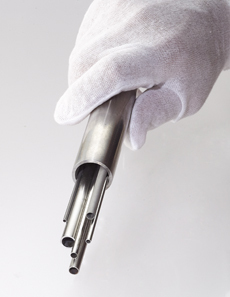
In the realm of manufacturing, the precision and quality of tubes play a pivotal role in determining the success and reliability of various industrial applications. The concepts of tube ovality, concentricity, and eccentricity are crucial factors that significantly impact the performance and functionality of tubes in diverse engineering and manufacturing processes. In this blog, we delve into the intricate details of these key parameters, shedding light on their significance and implications in the manufacturing industry.
Ovality
The ovality of a tube or the difference between the maximum and minimum dimensions of the OD, is obtained by carefully measuring the high and low points at any one section of the tube. The ovality tolerance is considered to be a total spread, inside which both the maximum OD and minimum OD dimensions must fall. When a tube or pipe is bent the tube becomes more oval than round. The flattening that occurs from the bend is called the ovality and this is a specification that is taken into account when calculating the bend.
Concentricity
For most applications, good concentricity is more valuable than good ovality. Parts that need a high precision require close attention to the tube’s concentricity. The concentricity is the variation in the wall thickness. If one tube needs to fit into another then the concentricity is critical. If this is the case, you should let the engineers know the result you are looking for before requesting a quote. A tube that needs to fit inside an opening of another tube will need specifications regarding the OD, ID, and concentricity of all of the tubes for all of those parts to work together.
Concentricity may not be an issue for gasses and liquids to flow throw a tube. In this instance, wall thickness may be the important dimension. The pressure of the liquid or gas flowing through the tube will require an acceptable wall thickness.
Eccentricity
An eccentric tube has the center of the tube formed by the OD which is at a different point from the center formed by the ID, so the 2 dimensions are not concentric. Eccentricity can be checked by determining the wall thickness around the tube at any cross-section to establish the maximum and minimum.
Ovality, concentricity, and eccentricity are just one factor in ordering your tubing. See Eagle’s top 10 tips for ordering tubing where it discusses all you may need to know before determining your critical requirements to requesting a quote.



